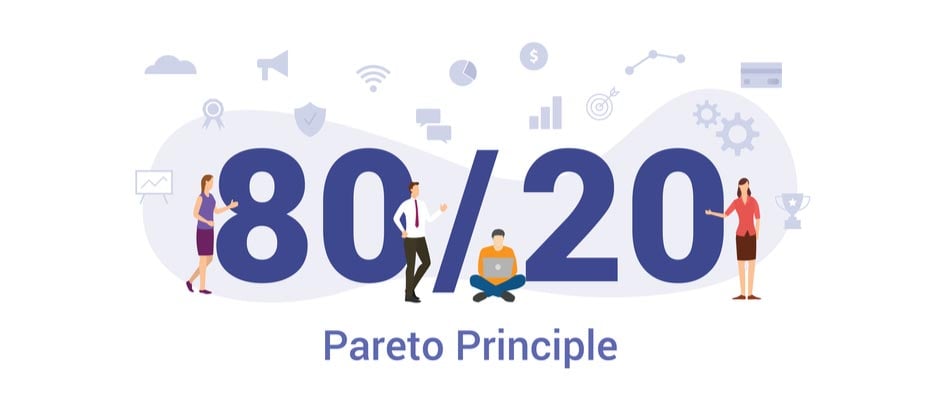There may be nothing worse than churn when it comes to net new revenue growth. The more clients you churn, the more you find yourself running in place, winning new deals that only replace part of what you lost. I happen to know a lot about churn from my time working in a Red Ocean industry, one with a lot of competition. It would not be uncommon to lose three million dollars in revenue every year, requiring three million and one dollars to get one dollar of growth.
One year, I lost an account that spent six million dollars with my company. They started out as a dream client, but they were purchased by another company and ended up being a nightmare client. That year, I had to make up nine million dollars just to get back to even. After recovering that revenue, I was able to grow revenue, but with an anemic growth rate.
I am not certain how exactly I angered the Gods of Sales, but one year later, I lost another very large client when a new stakeholder took over our category and replaced my company with the lowest-priced provider in the market. She was trying to save the company money, something that wasn't important to the company, as they had very high margins and, up until she joined the company, invested in the results they needed. That was a seven-million-dollar churn plus the natural three million I lost every year.
My team won enough large clients that we made up the losses and barely increased revenue over the year before. I believe it was my commitment to always do the right thing that pleased the Gods of Sales, or maybe some other sales leaders caught their attention and became the subject of their ire.
The Quality of Your Clients and Revenue Growth
The quality of your clients is a variable when it comes to churn. The pursuit of revenue causes many sales organizations to pursue anyone who might buy what they sell, even if they are not a great fit, and even if it means they need to install a revolving door to usher them out as fast as they acquired them. You might capture a little revenue for a short time, but it’s mostly a waste of your time.
Imagine you are building a brick wall. You put a brick in place, you put cement on top of the brick, and prepare to place another brick on top of it. But right as you are about to add another brick, the first brick disappears. You are not going to build your wall very quickly or very high if you have no foundation.
You are better off winning clients that are the right fit for your company, ones that are likely going to be with you for years into the future. The more stable the clients in your portfolio, the easier it is to increase net new revenue.

The Size of Your Targets and Revenue Growth
Twice in my life, my revenue growth was only made possible because of a focus on acquiring large, difficult to acquire clients. You can only replace a client with a high spend with another client with an equal or greater spend. You will find it next to impossible to replace seven million dollars in revenue by winning thirty-five clients that spend two hundred thousand dollars a year.
Given a long enough timeline, you will lose every client you have, and I pray those clients are only lost after it is no longer your concern. But because you will lose clients, you need to pursue clients large enough to produce revenue more than your churn. By targeting large clients, if you don't churn major clients, one very large win can cover the natural churn of smaller companies.

The Pareto Principle and Growing Revenue
Pareto studied the distribution of land in Italy. He discovered that twenty percent of the population owned eighty percent of the land. This principle has been shown to be true and useful, especially for sales organizations, as eighty percent of revenue comes from twenty percent of their clients. Even if your numbers are not exactly in line with Pareto, the principle generally holds true.
If you are going to churn clients, you don't want them to come from the top twenty percent. You want any churn to come from the bottom twenty percent, the small clients with revenue so small that you could easily make it up without any real effort.
The Drag on Revenue Growth
Some part of your churn is going to be outside of your control. You will have clients move out of your territory or a new leader who wants to make a fast impact deciding to remove you and bring in the company they used in their last job. You might also have your largest client acquired by their largest competitor, the one that already buys from your competitor.
Churn is the biggest drag on growth. As a sales leader, you need good relationships with the rest of your company to ensure that the companies at the top of your client list are still with you from year to year. You also need your leadership team to understand what your clients need and what will cause them to defect, threatening revenue growth.
It's important that you work on dealing with churn, starting by taking actions to prevent churn by bringing in the right clients. You also must help your team succeed in taking care of your clients by getting them off to a good start. But no matter how well you do at these things, you are still going to have some churn, which means always having a pipeline of large clients that ensures you don't take two steps backward while trying to move four steps forward.








.jpg?width=768&height=994&name=salescall-planner-ebook-v3-1-cover%20(1).jpg)


